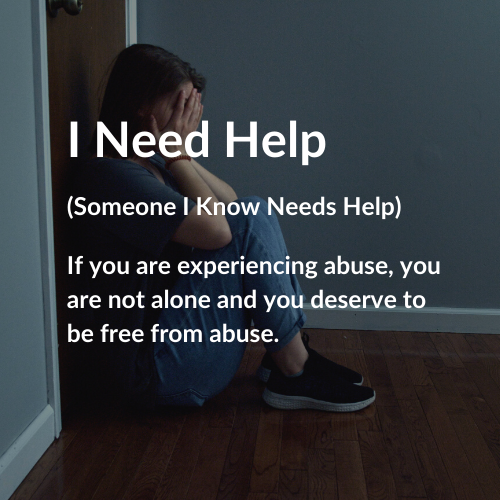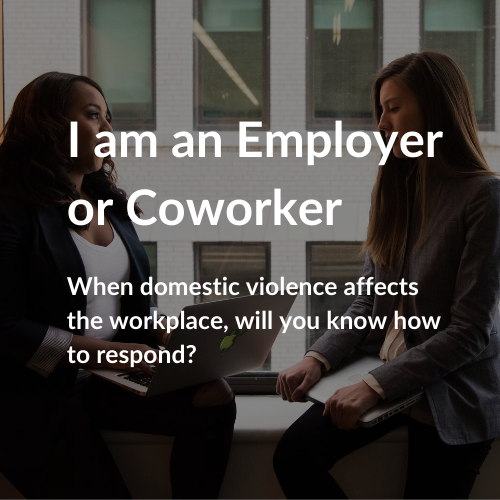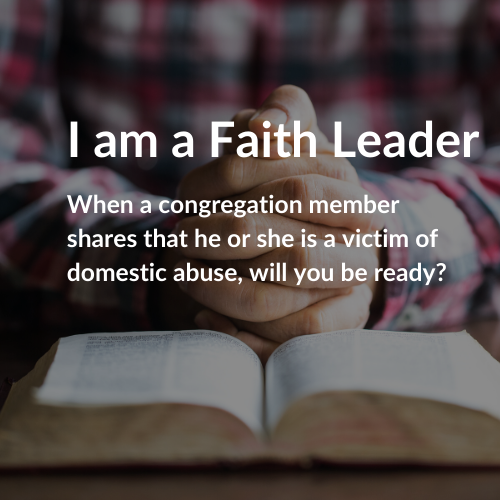Abusers will do anything possible to retain power and control over their victims. Routinely, this involves convincing a victim he or she is not being abused. It’s normal for victims to wonder if they are being abused. Are you being abused? Are you unsure? Take a few minutes to complete this assessment and you will have more clarity.

Types of Abuse
You can be abused and not even know it. And abuse of any kind is never your fault. Abusers use physical, sexual, digital, emotional, verbal, spiritual or financial control or combinations of these to gain and maintain control over their victims.
How to Help Someone You Know
When noticing signs of domestic abuse it is important to know how to help and support someone. Starting the conversation and guiding them to resources is crucial to their next steps.

General Employee Information
Domestic violence is a concern in every workplace. Each year domestic violence costs American businesses $1.8 billion in lost productivity and 74% of victims report that their abuser has harassed them on their job. Employers who address the issue can provide real help to victims and prevent associated risks,
>> Download our printable information on the impact to the workplace
Signs of Domestic Violence in the Workplace
How can you tell if an employee or a co-worker is a victim of domestic violence? No two cases are identical, but there are red flags that frequently signal that someone is being exposed to abuse.
>> Download our printable information to learn how to recognize the signs
Talking With Employees
If you believe that one of your employees or co-workers may be a victim, approach them and start a private conversation with them. Communicate your concern and let them know you are here for them if they need support and say what you have noticed to be different.
>>Download our printable information on how to talk to an employee
Employer Responsibilities
There are a variety of legal requirements that obligate employers to address and respond to the needs of domestic violence victims. Training, resources and policies are vital steps to protecting the workplace and your employees.
>>Download our printable information on how to best prepare your business
Primary Prevention for Leaders
Primary prevention is any action, strategy or policy that works to stop domestic violence from occurring in the first place. Primary prevention seeks to reduce the overall likelihood that anyone will become a victim or perpetrator of domestic violence by creating conditions that make violence less likely to occur.
>>Download our printable information on primary prevention for leaders
Sample Policy
The first step in protecting employees from domestic violence and being able to provide support to victims is to create a formal policy and accompanying procedures.
>>Download our information on best practices for implementing a policy for your work place

Domestic Violence and the Church
Domestic violence should be a concern for every religious leader. Domestic violence victims are more likely to disclose the abuse to someone in their faith community than they are to seek help from law enforcement. 81% of pastors say they would take action to reduce domestic violence if they had more training to address the issue.
>>Download our printable information on domestic violence an the church
Signs of Domestic Violence in the Church
No two cases are identical but several red flags signal someone is experiencing abuse. While one behavior may or may not be a sign of abuse, it is important to look for patterns of behavior that have caused the victim to change how they normally behave.
>>Download our printable information on recognizing the signs
How to Help Someone in Your Church
If you suspect someone is experiencing abuse, their safety and the safety of their children is the most important thing. Be discreet. Speak with the victim privately, away from their partner and children. Understand it may be difficult and frightening to talk about the abuse they are experiencing.
>>Download our printable information on how to help someone in your church
Faith Leaders Can Protect Victims
Creating a culture of safety and support through awareness and prevention efforts speaks volumes to victims and survivors of abuse saying, this is a safe place– and warns abusers that abuse will not be tolerated.
>>Download our printable information on how to protect your congregation
Primary Prevention in the Church
Primary prevention is any action, strategy or policy that works to stop domestic violence from occurring in the first place. Primary prevention seeks to reduce the overall likelihood that anyone will become a victim or perpetrator of domestic violence by creating conditions that make violence less likely to occur.
Preventing domestic abuse and helping families is a community effort. Sheltering Wings offers training options for groups of all shapes and sizes.
![]()
If you are in immediate danger, call 911 right now.





